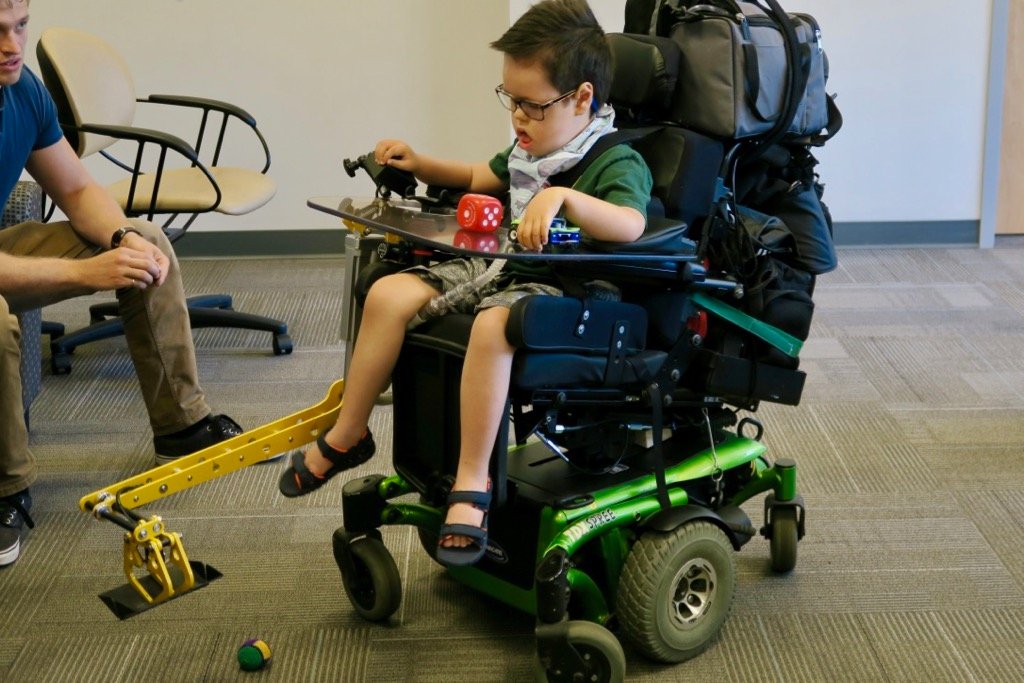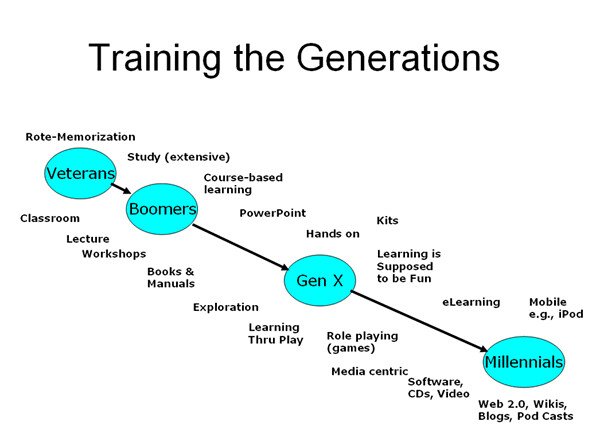Training a puppy can be both a challenging and rewarding experience. But what happens when that furry bundle of joy comes with special needs? Just like humans, dogs can also face physical or mental challenges that require a unique approach to training. Whether it’s a puppy with a hearing impairment, visual impairment, or any other special need, understanding their unique circumstances and tailoring training methods to their specific requirements is essential. In this article, we’ll delve into the world of training puppies with special needs, exploring the strategies, techniques, and tips to ensure a successful journey of growth and development for both the pup and their loving owner.
Table of Contents
- Understanding the Unique Needs of a Puppy with Special Requirements
- Tailoring Training Techniques to Accommodate Special Needs
- Establishing a Consistent Routine for Effective Training
- Creating a Safe and Enriching Environment for Your Special Needs Puppy
- Choosing the Right Training Tools and Techniques for Success
- Q&A
- Concluding Remarks

Understanding the Unique Needs of a Puppy with Special Requirements
When it comes to welcoming a puppy with special requirements into your home, it’s important to approach their care and well-being with compassion, patience, and understanding. These adorable furry friends may require some extra attention, but their unique needs can be met with a little extra effort and love.
Physical considerations:
- Diet: Consult with a veterinarian to create a specialized diet plan that takes into account any dietary restrictions or allergies your puppy may have. Providing the right nutrients is crucial to ensure their overall health and development.
- Exercise: Depending on their physical limitations, it’s important to engage your puppy in appropriate forms of exercise. This can include gentle walks, swimming, or adapted activities that help them stay active and maintain a healthy weight.
- Comfort and safety: From investing in comfortable bedding to creating a safe environment free from any hazards, paying attention to the physical comfort and security of your puppy plays a vital role in their happiness and well-being.
Emotional support:
- Positive reinforcement: Use positive reinforcement techniques to help your puppy build confidence and trust. Rewarding good behavior with treats, praise, and affection can go a long way in creating a strong bond and fostering a positive emotional state.
- Socialization: Ensuring your puppy with special requirements has opportunities to interact with other dogs and people can help them develop the necessary social skills. Slowly introduce new experiences and environments to avoid overwhelming them.
- Patience and understanding: Understand that your puppy may have unique challenges and may require additional time and patience to learn and adapt. Always approach training and handling with gentleness, ensuring their emotional well-being throughout the process.
By taking the time to understand and meet the unique needs of your puppy with special requirements, you can provide them with a nurturing and loving environment that allows them to thrive. Remember, every puppy is different, so always consult with a veterinarian and specialists in order to tailor their care specifically to their needs.

Tailoring Training Techniques to Accommodate Special Needs
Adapting and Customizing Training Methods for Individuals with Special Needs
When it comes to training individuals with special needs, it is crucial to tailor techniques to suit their unique requirements and abilities. By adopting a flexible approach and considering the specific challenges they may face, trainers can create an inclusive and supportive learning environment. Here are some strategies and practices to consider when accommodating special needs:
- Personalized Instruction: Recognize that each individual is different and may respond better to certain teaching methods. Focus on adapting instruction styles to suit their learning preferences and strengths. This could involve using visual aids for those with visual impairments, incorporating hands-on activities for kinesthetic learners, or employing auditory cues for individuals with hearing impairments.
- Modifying Assessment Methods: Traditional assessment methods might not accurately measure the knowledge and skills of individuals with special needs. Consider implementing alternative assessment techniques, such as allowing extra time for completion, providing prompts or scaffolding, using adaptive technology, or offering oral assessments instead of written exams. The goal is to ensure that individuals are assessed fairly and that their true abilities are reflected.
- Creating a Supportive Environment: Foster a safe and supportive training environment that encourages open communication and invites questions. Incorporate strategies such as visual schedules, social stories, or sensory accommodations to help individuals feel more comfortable and engaged in the learning process. Encourage teamwork and peer support to enhance inclusivity and build collaborative skills.
By adapting training techniques to cater to the diverse needs of individuals with special needs, we can create an inclusive and empowering learning experience. Remember, it is crucial to consult with experts, involve caregivers, and continuously assess and adjust the training methods to ensure the best outcomes for those with special needs.

Establishing a Consistent Routine for Effective Training
Planning your training routine
When it comes to effective training, establishing a consistent routine is key. Having a well-thought-out plan will not only help you stay organized, but it will also enable you to make progress towards your fitness goals. Start by setting specific and measurable objectives. Whether you want to improve your endurance, build strength, or simply maintain an active lifestyle, clearly define what you want to achieve.
Once you have set your goals, break them down into smaller, manageable tasks. This will make them seem less overwhelming and easier to accomplish. Consider creating a weekly schedule outlining which activities you will engage in each day. A mix of cardiovascular exercise, strength training, and flexibility exercises is recommended for a well-rounded routine. Remember to include rest days to allow your body to recover and prevent overtraining.
- Include a warm-up and cool-down period in each training session to prepare your body for exercise and promote recovery afterward.
- Set aside a specific time for your workouts that aligns with your natural rhythm and fits into your schedule. Consistency is key, so try to stick to your chosen time every day.
- Track your progress to stay motivated. Record your workouts, note any improvements, or identify areas where you can push yourself further. Seeing your achievements on paper can be incredibly satisfying and inspiring.
By establishing a consistent routine and sticking to it, you will not only enhance your physical performance but also cultivate discipline and focus in other aspects of your life. Remember, every small step counts towards your ultimate fitness journey, so stay committed and enjoy the process!

Creating a Safe and Enriching Environment for Your Special Needs Puppy
When it comes to caring for a special needs puppy, providing a safe and enriching environment is crucial for their well-being and development. By taking some extra precautions and making a few adaptations, you can ensure that your puppy feels secure and has the opportunity to thrive. Below are some tips to help you create the perfect environment for your special furry friend:
- Modify your home: Make sure your living space is puppy-proofed to minimize potential hazards. Secure loose cords, block off access to high-risk areas, and cover sharp edges with foam or tape. Creating physical barriers with baby gates or fences can also help create boundaries within the house.
- Create a routine: Establishing a consistent daily routine can provide stability and comfort for your special needs puppy. Try to maintain regular feeding times, play sessions, potty breaks, and sleep schedules. Having a predictable routine allows your pup to anticipate and understand what comes next.
- Use sensory stimulation: Special needs puppies may benefit from additional sensory stimulation. Provide different textures for them to explore, such as rubber toys, soft blankets, or textured surfaces. Additionally, consider introducing soothing music or low-level background noise to create a calming atmosphere.
Choosing the Right Training Tools and Techniques for Success
- Identify your learning style: Everyone has a preferred way of learning, whether it’s visual, auditory, or kinesthetic. Understanding how you best absorb information can help you choose tools and techniques that cater to your specific learning style.
- Research different training methods: There is no shortage of training methods out there, each with its own advantages. Explore techniques such as online courses, workshops, mentorship programs, or even self-study guides. Consider factors such as time commitment, costs, and accessibility when making your decision.
- Seek recommendations and reviews: Hearing from others who have had success with specific training tools and techniques can provide valuable insights. Ask for recommendations from peers, consult online reviews, or join forums and communities where individuals share their experiences and offer advice.
- Set clear goals: Before committing to any training tool or technique, establish clear goals for what you aim to achieve. This will help you identify which options align best with your objectives and avoid wasting time and resources on approaches that may not be relevant.
Q&A
Q: Can I train a puppy with special needs?
A: Absolutely! Training a puppy with special needs requires patience, understanding, and the right approach. With adaptable training techniques and a positive attitude, you can help your furry friend thrive.
Q: What are some common special needs puppies may have?
A: Some common special needs in puppies include physical disabilities, sensory impairments, or cognitive challenges. Each puppy is unique, so it’s important to identify their specific needs and tailor training accordingly.
Q: How can I make training sessions more effective for my puppy with special needs?
A: Making training sessions short, using consistent commands, and offering plenty of rewards are key to helping your puppy with special needs succeed. Break down tasks into manageable steps and celebrate even the smallest achievements.
Q: How can I build a strong bond with my puppy with special needs?
A: Building a strong bond with your puppy involves spending quality time together, providing gentle physical touch, and offering rewards as a form of positive reinforcement. By being patient and understanding, you can foster trust and strengthen your connection.
Q: Are there any specific training techniques for puppies with special needs?
A: Yes, there are various training techniques that cater to different special needs. For example, using hand signals or scent cues can be beneficial for puppies with hearing impairments, while scent-based training is great for puppies with visual impairments.
Q: How should I handle frustration during training sessions?
A: It’s natural to feel frustrated at times, but it’s important to remain calm and composed. Taking breaks, seeking support from professionals or support groups, and reminding yourself of your puppy’s progress can help you stay positive and patient during training.
Q: What resources are available for training puppies with special needs?
A: There are numerous resources available to help you train your puppy with special needs. Online forums, books, local trainers, and veterinary professionals can provide guidance, tips, and advice tailored to your puppy’s specific needs.
Q: Can I still train my puppy to be social with other dogs and people?
A: Absolutely! Socialization is crucial for every puppy, including those with special needs. Gradually introduce your puppy to new experiences, people, and dogs in a controlled and positive environment to help them develop important social skills.
Q: How long does it take to see progress in a puppy with special needs?
A: The time it takes to see progress in a puppy with special needs can vary. It depends on the specific needs of your puppy, consistency in training, and their individual progress. Celebrate every small victory and remember that each milestone is worth it.
Concluding Remarks
As we conclude this journey of training a puppy with special needs, it is evident that the path to successful development is one paved with patience, understanding, and unwavering love. It is no secret that these extraordinary furry companions require additional attention and tailored techniques in their training process, but the rewards reaped far outweigh the extra efforts invested.
Throughout this article, we have delved into the essential aspects of training a puppy with special needs, exploring an array of techniques and strategies that can help both puppies and their human companions thrive. From creating a safe and stimulating environment to promoting positive reinforcement and establishing a consistent routine, each step serves as a vital cornerstone in shaping the lives of these remarkable pups.
Training a puppy with special needs is a collaboration between compassion and innovation. Every small victory, whether it be mastering a basic command or overcoming a particular sensory obstacle, is a testament to the unwavering resilience and adaptability of these marvelous creatures. It is within our hearts and hands that their potential can truly be unlocked.
In closing, let us remember that training a puppy with special needs is more than just a task; it is an opportunity to redefine what is possible. It is a chance for us to showcase the limitless boundaries of empathy, understanding, and dedication. With our guidance and unwavering support, these puppies will not only defy expectations but also inspire and teach us invaluable life lessons along the way.
So, as we embrace the adventures that lie ahead, we embark on this extraordinary journey with dreams of boundless growth and unbreakable bonds. Let us continue to celebrate the unique power and beauty that resides within these remarkable puppies with special needs. Together, we will shape a future where love knows no limitations, and every puppy, regardless of their challenges, has the chance to thrive and conquer every obstacle that comes their way.
As an affiliate, my content may feature links to products I personally use and recommend. By taking action, like subscribing or making a purchase, you’ll be supporting my work and fueling my taco cravings at the same time. Win-win, right?
Want to read more? Check out our Affiliate Disclosure page.